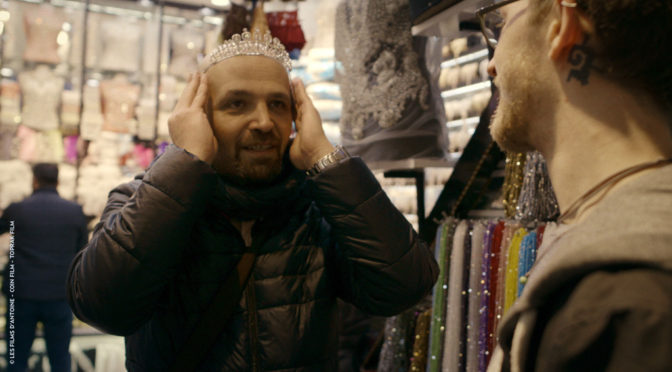 Syria has had a turbulent recent history and the facts of the unrest have been plastered over every media outlet. There is an aspect, however, that is not publicised or looked into; the LGBTQ+ community of Syrian refugees. Ayşe Toprak’s film, MR GAY SYRIA, follows a small part of this group of Syrian refugees as they try to become Mr Gay Syria, Mr Gay World and gain refugee status outside of Turkey (a country becoming increasingly more homophobic).
Syria has had a turbulent recent history and the facts of the unrest have been plastered over every media outlet. There is an aspect, however, that is not publicised or looked into; the LGBTQ+ community of Syrian refugees. Ayşe Toprak’s film, MR GAY SYRIA, follows a small part of this group of Syrian refugees as they try to become Mr Gay Syria, Mr Gay World and gain refugee status outside of Turkey (a country becoming increasingly more homophobic).
These groups of people have fled a war but are still not safe unless they hide part of their identity from their family and society. They have created their own private safe spaces in cafes and apartments. The main subject of the film, Husein, has a wife and child living with his father in a town close to where he works. When he returns home to them, he has to be the father figure and denounce the part of himself that makes him who he is. Not only this, but, he fears being beaten by his father if he suspects he is exploring his sexual identity.
There are moments in the film where Husein eloquently retells his abusive relationship with his father and these are some of the most poignant moments of MR GAY SYRIA. Toprak does not use complicated camera angles or overtly posed shots, instead, she lets the men tell their story as their words and histories are often more powerful than anything a camera, script or edit could produce. She creates an intimate space between the subjects and the audience of the film without making the viewer feel invasive. This element of the film is very well done and captures the personalities and intricate relationship dynamics by all those who appear in the documentary. Toprak has moments in the film where she interjects shots of the men talking with shots of the surrounding area. This is particularly effective during the Pride Parade in Turkey. The men are translating what it says on their signs for the Parade (‘I want to live’) and Toprak interjects this moment with shots of policemen outside patroling the street. A moment that feels empowering is injected with an element of fear: a day that should be liberating for the men will not be. The police are there to break up the Pride Parade and do so in an aggressive manner. Although a simple addition to the film, it is powerful and creates narratives outwith the central focus of the shot.
Toprak’s documentary style in this film allows the subjects to be the focus of the film and the audience are enamoured by these men and their bravery. She allows them to tell their own story and creates an emotional experience for the viewer. This film is important not only because it has given a platform for the Syrian LGBTQ+ community but also because of the way the director gives Husein and all the refugees sovereignty over their own histories.

